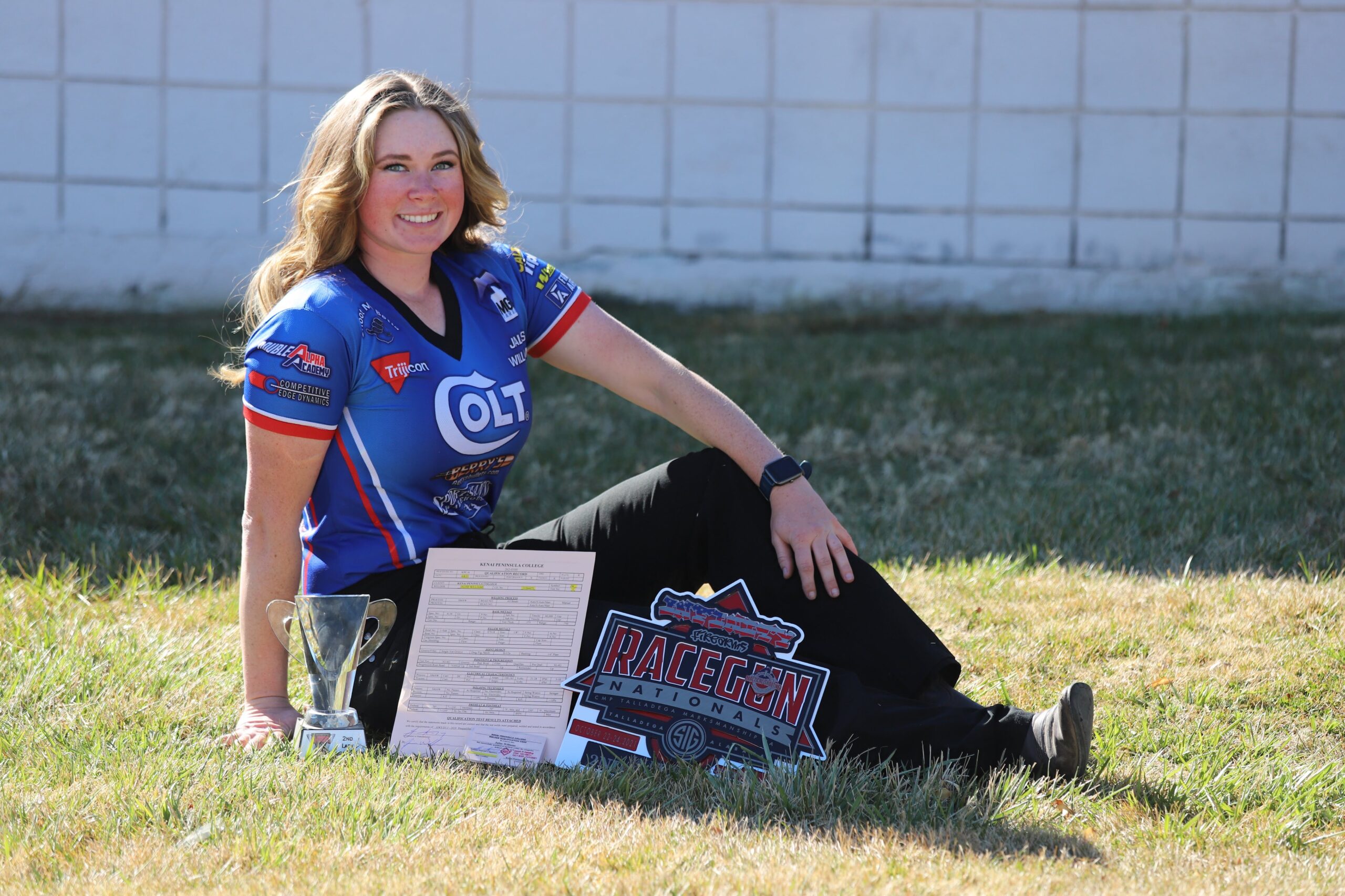I was able to interview the Williams sisters to talk about the PCC World Shoot. We discussed what training looked like leading up to the competition and what it felt like to stand on the podium representing the USA while winning gold. -Kenzie Fitzpatrick
I’ve known the Williams sisters for some time now. I’ve shot and squadded with them at matches. To say they’re quick, accurate and disciplined would be an understatement. They’ve grown up in the shooting sports. They’ve also shot multiple disciplines across nearly every single division, and they continue to try new things. Both of these ladies are in the prime of their shooting career to the point where they represent Team USA and travel nationally and internationally to compete.
And the cherry on top is that both sisters run firearm training companies to share their talent and skills with others.
Advertisement — Continue Reading Below
Jalise
Jalise Williams is a multi-discipline professional shooter, firearms instructor and decorated champion.
At this point, she accounts for a decade of elite-level competition experience. In fact, she’s the holder of 42 national titles, 8 world titles and over 190 match wins. Some of Jalise’s most notable exploits include gold and bronze medals at the 2023 IPSC Shotgun World Shoot. In 2018 at the age of 15, Jalise also became the youngest female national champion. Before that, she won her first world title in 3-Gun at 14. Most recently, she earned a team gold medal at the 2025 PCC World Shoot. Jalise has rightly earned her place among the shooting sports elite.
Advertisement — Continue Reading Below
Justine
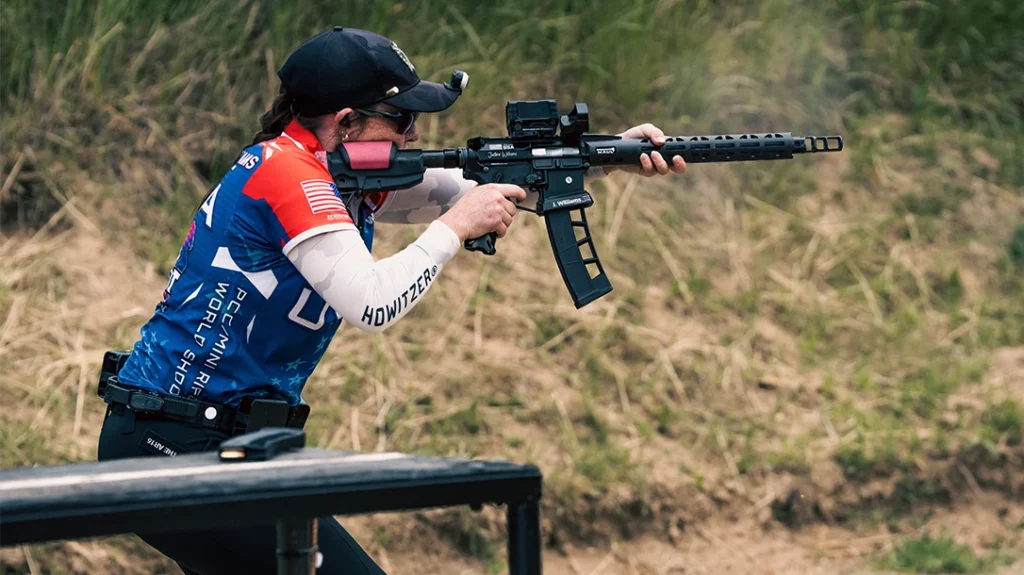
Justine Williams is a world-class competitive shooter with over 12 years of experience competing at the highest levels in USPSA, IPSC, PCSL, USSL, Steel Challenge, and 3-Gun.
She has competed and won at local, state, national, international and world championship events. Justine’s career is marked by extraordinary achievements: 9-time world champion, holder of 100+ national and area titles, and 9 national records. In addition, she has proudly represented the United States at multiple world and Pan-American championships and earned top honors while doing so.
Advertisement — Continue Reading Below
One of her most groundbreaking accomplishments came when she became the first woman ever to compete on an overall team at the World Shoot. Her team placed first overall and she also captured the PCC Ladies World Champion title and ranked 8th out of over 800 competitors worldwide — a testament to her skill, dedication, and drive.
When did you both first learn about the dates for the first PCC World Shoot? With the date in mind, did you have your sights set on making the team from the start?
Justine: This match has been pushed back multiple years. We started qualifying for it in 2020, expecting it to happen in 2023 or 2024. COVID disrupted the shooting sports industry, pushing all world shoots back. Originally, PCC World Shoot was going to be hosted in Florida, but with the dates changing, it was moved to the Czech Republic. Ironically, this match has been in planning for five years, which is a very long time to know about and prepare for a world shoot.
What were your goals for making the USA team for IPSC PCC World Shoot?
Justine: Back in 2020, my goal was simply to make a ladies’ team. However, after a solid 2020 performance, an okay 2021 performance, and high results in 2023 and 2024, I saw I had a chance to make the overall team.
Advertisement — Continue Reading Below
Jalise: PCC World Shoot wasn’t really on my radar until last year. I didn’t have a big interest in PCC until USPSA shared who was close to making the team last year. My name was high on the list to potentially earn a spot. I ended up qualifying for the ladies’ team with my Colt PCC, which was awesome. I was excited to go to another world shoot and compete.
Speaking of World Shoots, I know you both have been shooting since you were kids. When did World Shoots in general become a possibility for you to start competing in?
Jalise: We started looking in 2016 after we saw the competitors chosen to compete in the 2014 World Handgun Shoot. We didn’t really understand the qualification process either at that point, so we knew we had to figure out how to qualify first.
Justine: I remember us wanting to go to France in 2017, but it was a blessing we missed out on that one, as I don’t think we were mentally ready for that at that point. Both of us set sights on Thailand, but the COVID requirements to isolate for a long time made it impossible for us to do so while living with our parents. We missed out on the Thailand Handgun World Shoot, but both of us ended up going to the IPSC Shotgun World Shoot, also hosted in Thailand. We learned a lot from that match, which prepared us for the Rifle World Shoot and, in turn, the PCC World Shoot. Everything kind of worked out as it should.
Advertisement — Continue Reading Below
What did your dry fire and live fire practices look like leading up to World Shoot? Did you get to train together at all, or what did that look like?
Justine: Since both of us live in separate states now, we were really on our own prepping for this match. I started really hitting PCC hard in February/March, shooting-wise. I was practicing five days a week for three to four hours, not even talking about the physical training side of it. My goal is to train with one gun for four months to reach a peak in terms of performance, which was the perfect amount of time to prepare for World Shoot. If I spend too much time on a gun, I can get bored and start to plateau or even decline from the “peak” I had trained so hard for. I think for any athlete, it’s about finding the proper peak at the right time.
Jalise: I had initially planned to start in February, and then, in early February, I fractured my ankle. I had to be on bed rest for four weeks and then do physical therapy for another four weeks. So, it was rough. I did a lot of dry fire from my bed and my couch. I had to get used to seeing the red dot, because I’m an iron sight shooter. A dot is something that I haven’t ever encountered and haven’t really spent time behind. So, seeing that dot every day was good. I also used the Cool Fire Training system, which uses CO2 gas to simulate blowback. It gives you a realistic recoil impulse, which helped a lot, too.
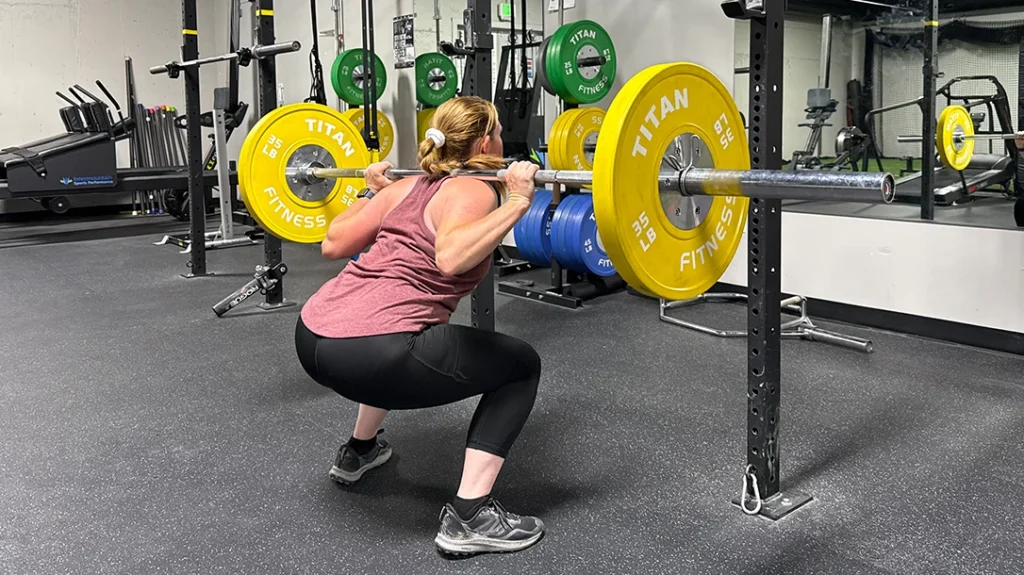
Advertisement — Continue Reading Below
At the end of March or the beginning of April, I got the all-clear mark, and everything healed up. I then went back to hardcore training, and that’s when I brought my team to St. George. The ladies’ team all trained together for about five days. Even Justine came for a few days, which was a lot of fun.
What did live fire training look like? With IPSC being so different, did you all focus more on fundamentals or train with harder, smaller targets? How often were you working on partials or activators?
Jalise: I did a lot of fundamental training because it’s easy to switch from one gun to another if you have the fundamentals mastered. I worked on a little bit of movement. But since PCC was very similar to handgun, it wasn’t a primary focus of mine. I did a lot of long-range shooting, anticipating a lot more long shots at the PCC IPSC World Shoot. There weren’t nearly as many long-range shots as I had expected, so I was overprepared. I was thankful for that.
Justine: When I was prepping for world shoot, I would say I started off with the basics in February and March. I knew I was more of a speed shooter than an accuracy shooter. Because IPSC is more of an accuracy-based sport, that’s what my primary focus was.
I also practiced extensively with Max Leograndis, who has been the undefeated USPSA National PCC Champion every year it has been hosted. I would drive an hour and 15 minutes one way every single day to the range, but we would shoot 600-700 rounds every training session. He would set extremely challenging targets for us to practice, but when I arrived at World Shoot, I felt like we had already practiced exactly what was laid out on the stages. We trained with mini targets that had no shoots on them, which isn’t something we are used to in the States. This training made USPSA matches look a lot easier after coming back from the Czech Republic.
Justine, you are the first woman in IPSC history to qualify for and make the overall team, which has traditionally always been called the “men’s team.” What would you say to young women reading this who don’t think it’s possible to be at the top of their sport and compete alongside men?
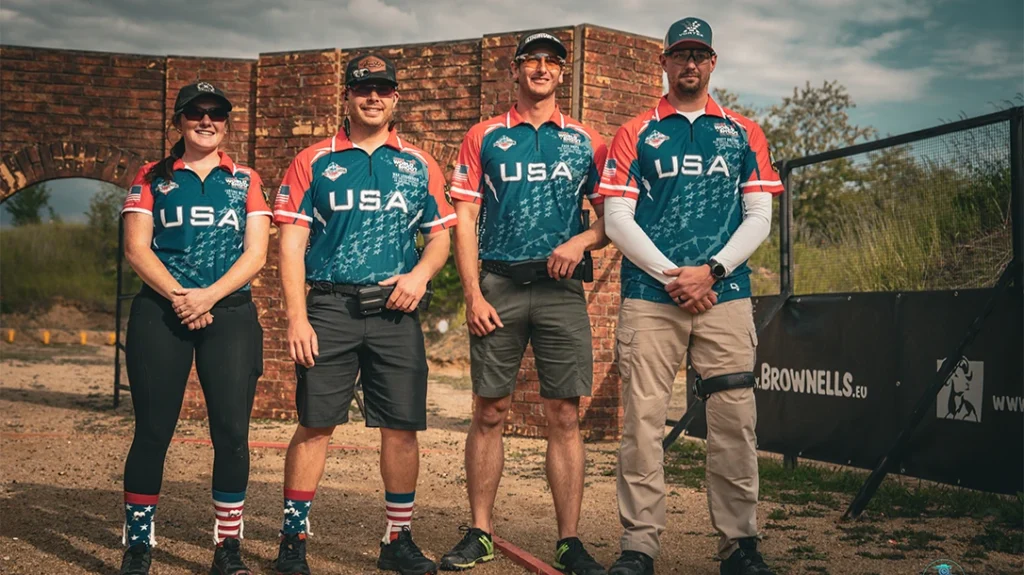
Justine: When I qualified for this team, I was extremely nervous. I almost said no.While I had qualified for the team, at the last Nationals, I took 13th overall. While that’s still a very high placement, it was my lowest placement at a PCC National event, and I was very embarrassed. When I got home from that [match], I had to ask myself what I was missing to have placed much lower than the previous year’s Nationals, where I was 2nd overall.
I realized it was the physical aspect of the sport. My teammates Zach, Scott, and Max are all tall, can squat hundreds of pounds, and move fast. I knew then that I needed to hit the gym hard. I’ve never worked as hard in my life at anything as I did to compete on the overall team. Max was also mentally helpful to me. He was very inclusive of me being on the team and reminded me that I belonged on the team. My other teammates were also super inclusive and made me feel like one of the guys. They didn’t make anything about gender and standing on the stage with them was the best part of my shooting career so far.
When we won, I realized I had just changed the history of the sport. So, to all the little girls and women out there, know that you can redefine history, and being a woman doesn’t set you back. Obviously, women have physical limitations up to a certain point, but you can compensate for those limitations in other areas. For example, I’m not going to be able to sprint as fast as Max, Scott, or Zach, but I can shoot as fast as them, so that’s where I can make up some ground. There’s always something that you can do a little bit better than someone else.
Jalise, you shot alongside Lena Miculek, Lanny Barnes, and Lynda Turnbull. What was it like competing with them?
Jalise: Women are better cheerleaders of each other. Yes, we are all competing against each other, but we also want each other to succeed. Although we’ve known each other for years, it was the team practice in St. George that truly brought us together. We had a group text leading up to World Shoot, where we’d share updates on training and just life stuff. It was the best team dynamic I’ve ever had.
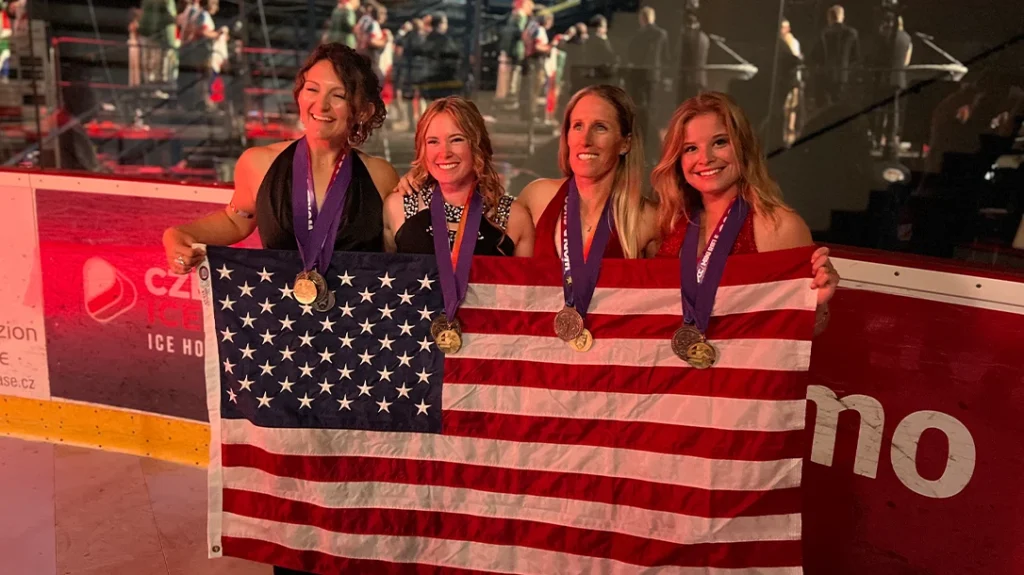
I’ve competed at other world shoots, Pan-American Games, and more. But with this team, we weren’t afraid to share strategies to help all of us perform better. Our sole goal was to secure a team gold medal, regardless of our individual aspirations to podium.
Shooting with Lanny was awesome because she’s been to a lot of different world shoots before, and she’s also an Olympian. Her Olympian mindset was something she brought to the team that no one else could. There were times during the match and even during training when we all were losing our minds a bit, and she’d help us through those challenges with ease. I think the best way to describe her is that she’s so steady, whether she’s doing well, making mistakes, or absolutely on fire. She was the safety buoy in the storm that we all could cling to when we needed it.
How did you both feel at PCC World Shoot, holding the American flag, listening to the National Anthem, and accomplishing the goals you set out for yourself?
Justine: I didn’t comprehend that I had won the Overall Ladies title until I was on the stage, hearing the national anthem. All the work I put in for the last five years was going through my head. I put everything I had into winning Gold, from dry fire to live fire training, to the physical training, and the mental hurdles I had to overcome. If I had come up short after dedicating everything to winning this medal, it would’ve been hard for me to deal with, but thankfully, it was enough. I felt like I had been holding my breath leading up to the match, walking the stages before the match, during the match, and winning allowed me to breathe again. It’s so hard to explain how surreal it is to stand on the podium, representing our beautiful country, and compete alongside the guys and feel like I belong.
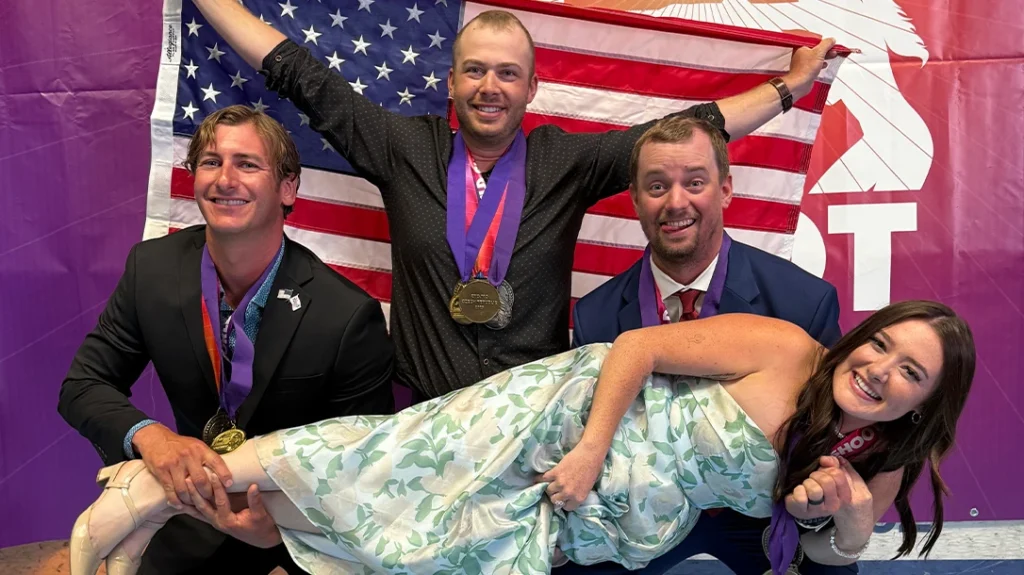
Jalise: Like Justine said, it feels surreal. I’ve won gold medals before, but this one felt different. Lanny, Lena, Lynda, and I dominated this one by a margin of almost 1,000 points over the silver team. It was heartfelt standing next to the other ladies and feeling like we accomplished our goal together.
How has the Colt partnership helped you both progress in the industry through competition and in the media?
Jalise: Colt’s partnership has elevated me both on and off the range. In competition, their support gave me top-tier equipment, visibility, and opportunities to grow as an elite athlete while representing an iconic brand. In the media, Colt has been very supportive of my work training women and juniors, helping me reach more people and inspire others to feel confident enough to pick up a gun.
Justine: Colt is an iconic brand that truly has put its name in the history books. It’s a legacy. From the moment Colt was interested in bringing me on as part of the team, I knew this was going to be iconic. To help bring a new generation to the shooting sports and additionally help Colt be the frontrunner in innovation.
What has being on Colt’s Pro Shooting Team meant to you both?
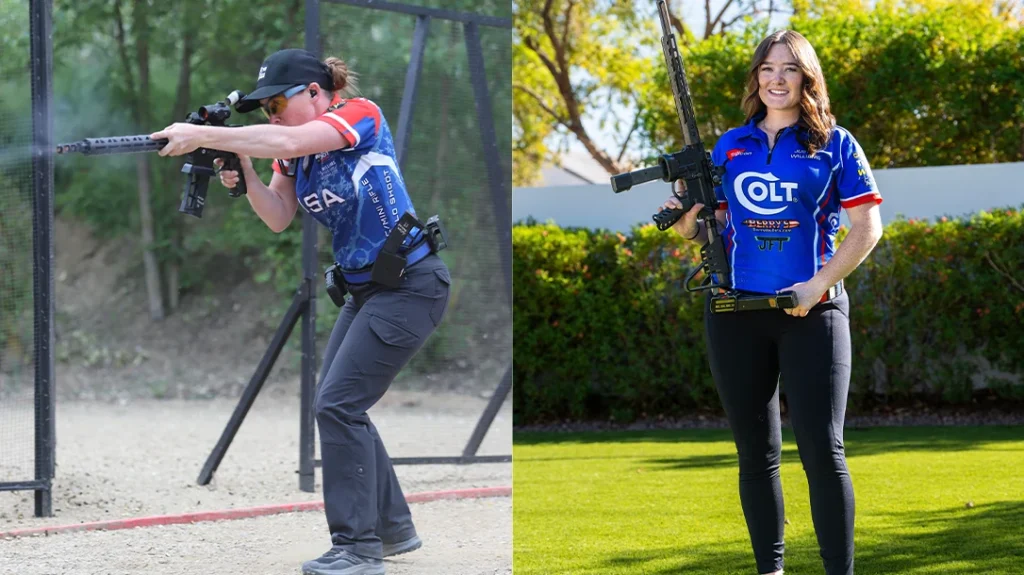
Justine: It means the world. For Colt to see me as someone worth watching and being a part of the brand is incredible. These opportunities are hard to find and are rare. Colt saw the potential and has really helped me achieve my dreams. I couldn’t be more grateful.
Jalise: Being on Colt’s Pro Shooting Team is a dream come true. Colt had such an iconic, winning team that was at the top of the sport for many years, and it means the world to me that they wanted me. The team itself is historical and impactful, and it’s truly an honor to be part of it.
My final question is, what are your big dreams in the shooting sports, whether it’s a 5-year, 10-year, or even 20-year goal?
Jalise: I would love an individual overall medal in the classic division because I love classic and the single-stack divisions. I have so much fun shooting iron sights, and no other gun or division has given me that amount of joy. There are parts of my job that aren’t as fun as others, so choosing to shoot what I enjoy and look forward to keeps me from burning out or being miserable.
Justine: I have two goals. One is to win an overall national title in the PCC division. I also want to win a ladies’ National title after I have a baby one day to show that women can do anything they put their mind to. I think it would be amazing to show your child one day just what a mom is capable of.


